“Kitem Kortai re?” a lyrical voice whiffed through the rifts of my headphones and into my ears. My eyes wandered in every direction to locate the voice, but the shade from the clustered cashew trees made it difficult. After a moment’s search, I saw her standing at a distance with a bucket in her hand. Large spots of grey hair covered her head, she assumed a slightly forward-bent posture, and a long red and gold beaded necklace that reached her semi-exposed belly. I unplugged my headphones as I walked towards her and surveyed the contents in her bucket. Cashew apples. Some were yellow, some red, and some with the red bleeding into the yellow. I looked up. Her eyes were heavy and black and her skin was wrinkled like a creased piece of cloth. Her body was draped in a blazing red kapod, and a ‘modern’ blouse as my village-living mother would call it. She lifted the bucket filled with cashew apples, mounted it onto her head and started walking. She looked at me curiously. “I am here to see some Feni-making,” I said, when her gaze questioned me.
A bevy of vibrant women walking in unison smiled at me and said, “Baba, there is no Feni here. We do not get cashews and there are no workers on this farm.” I was slightly indignant: everyone is leaving Goa for better opportunities! Who will work in these places? Who will take this legacy forward? But I quickly realised that, like ‘everyone’ else, the necessity of life had plagued my existence; it had prompted me to move away from my mother’s land, forget my mother tongue and the way of life that I was born into. I folded these thoughts like chits of paper, stacked them in a corner of my mind and silently followed the women.
We finally reached an open area amidst the canopy of Cashew trees around us. The women dropped their evening collection, a handful of cashew apples, into a bigger bucket. The lady wearing the red kapod pointed to an open area. “We smash the cashew fruits here and collect the juice,” she explained. I hovered around like a drone, like an outsider trying to make sense of a way of life that now exists only in this forest. “Pun atam kai na. There are fewer fruits every year due to the changing climate,” says another woman in a vibrant turmeric yellow kamisol.
I quietly wondered how nothing remains the same in this world. Our people, stories, climate, and seasons change continuously. But opportunities and livelihoods are frozen for these women and their families. This photo narrative captures those changes and that frozen state. The forest bustling with people, stories, smells, and cashew fruits now reeks of familiarity but also abandonment, neglect, and a state of transition.
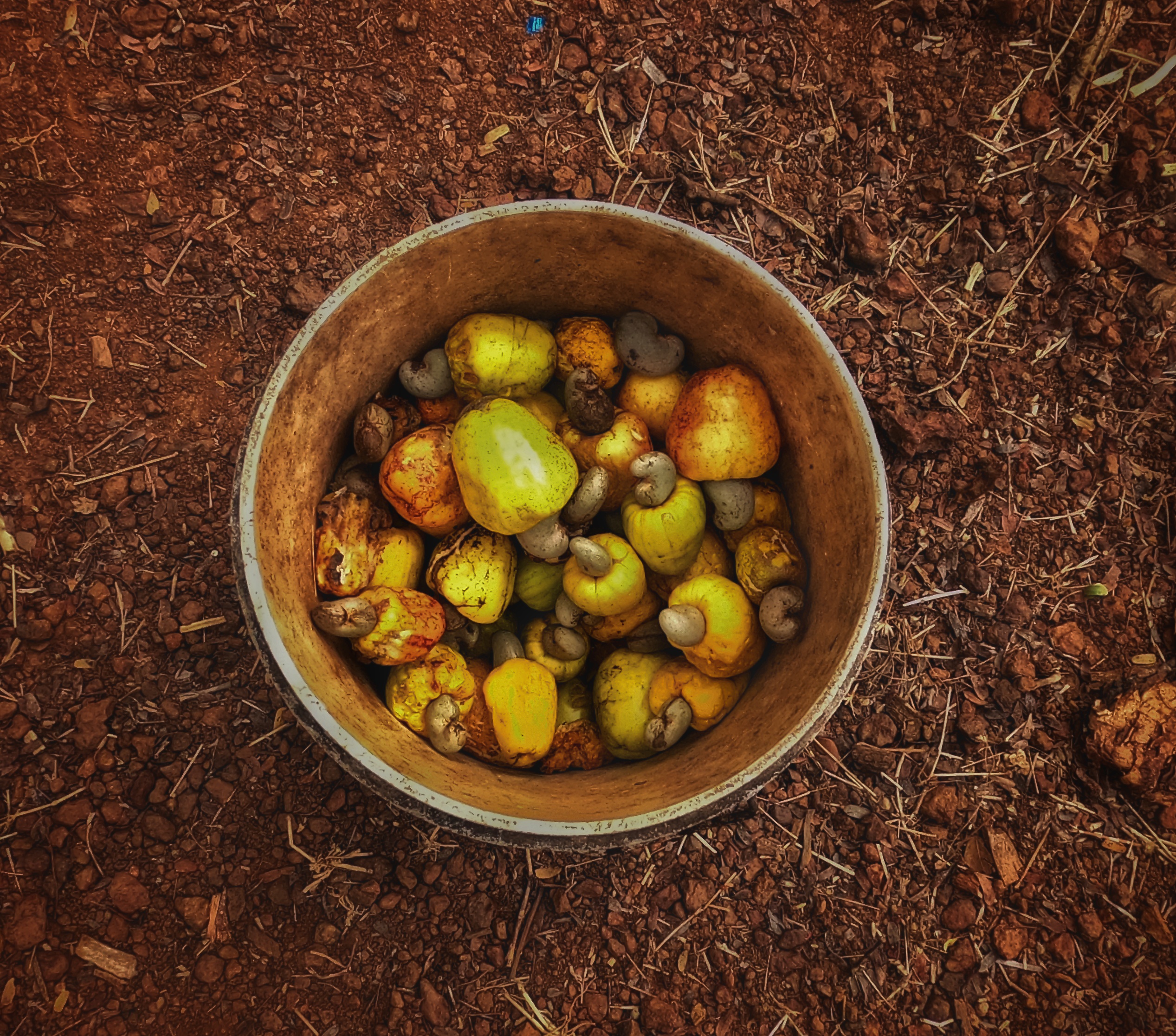
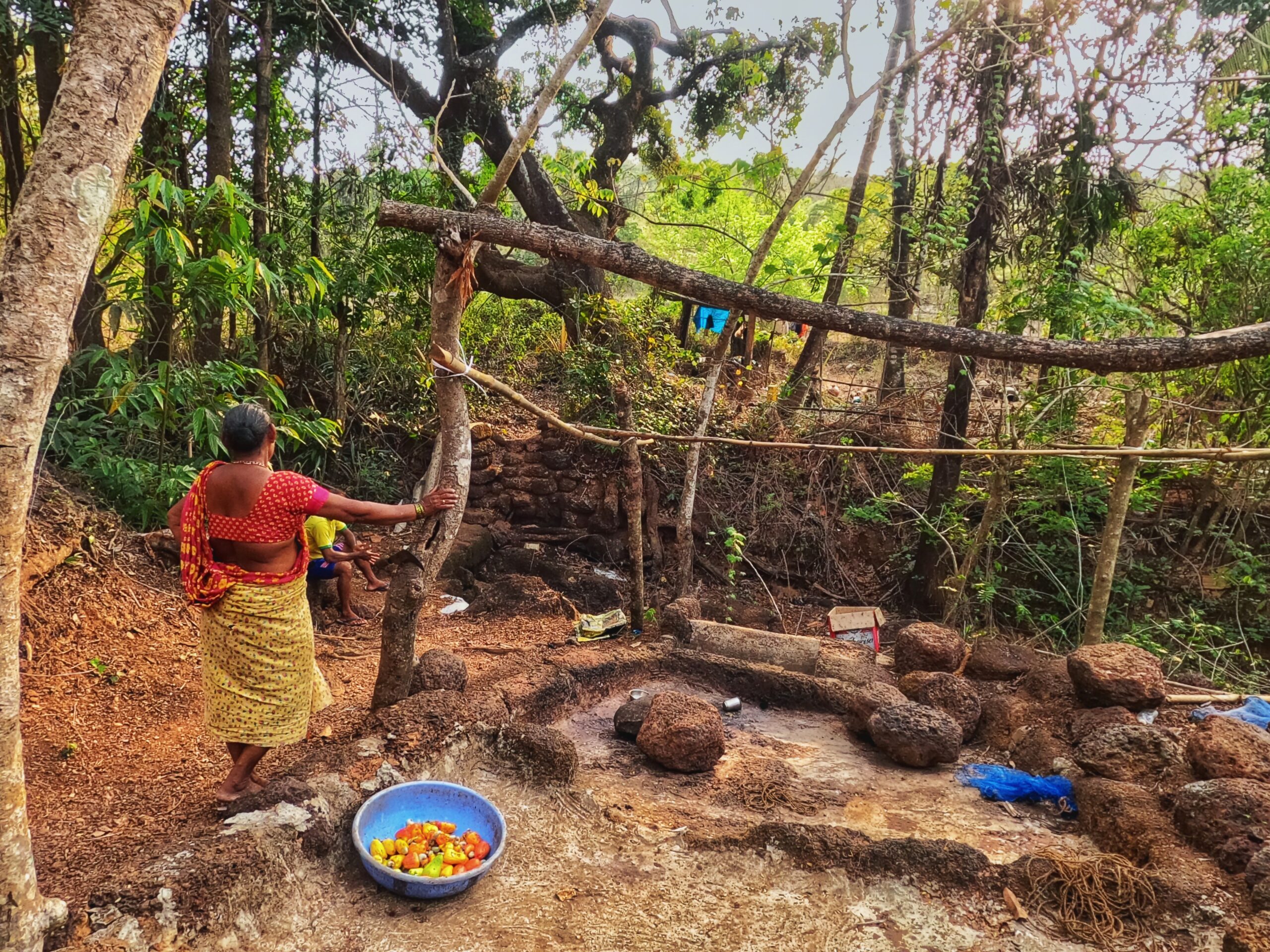
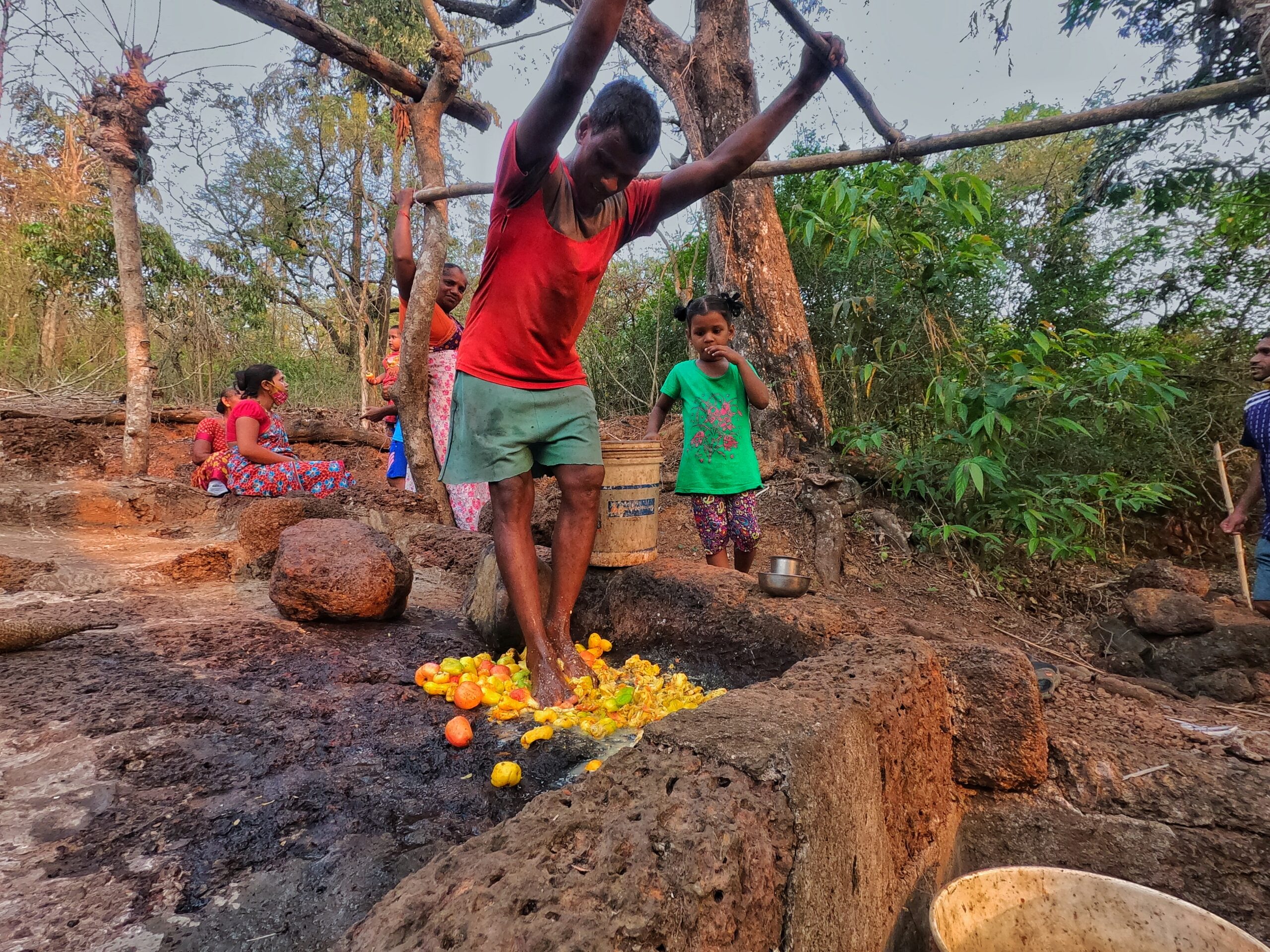
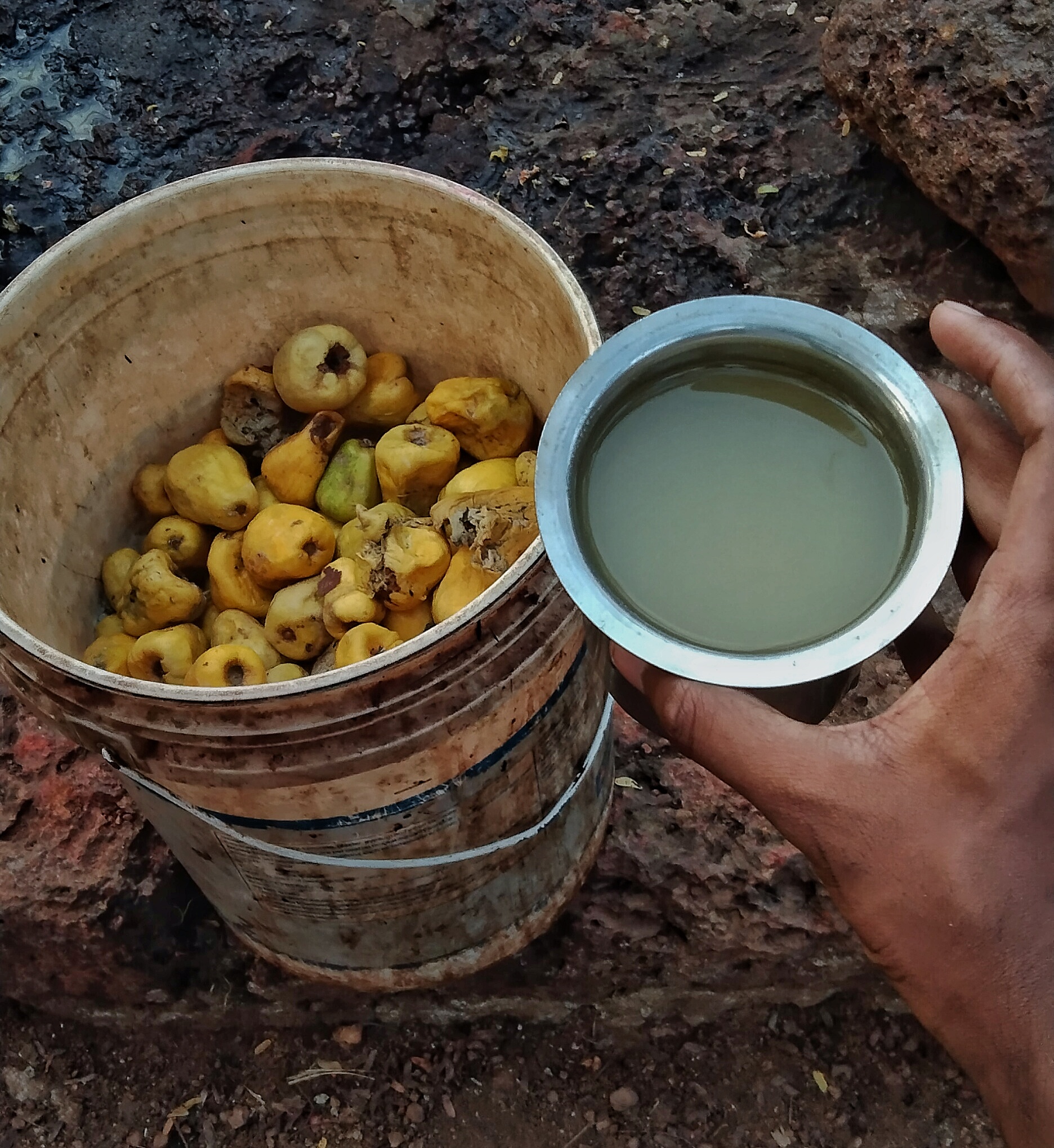
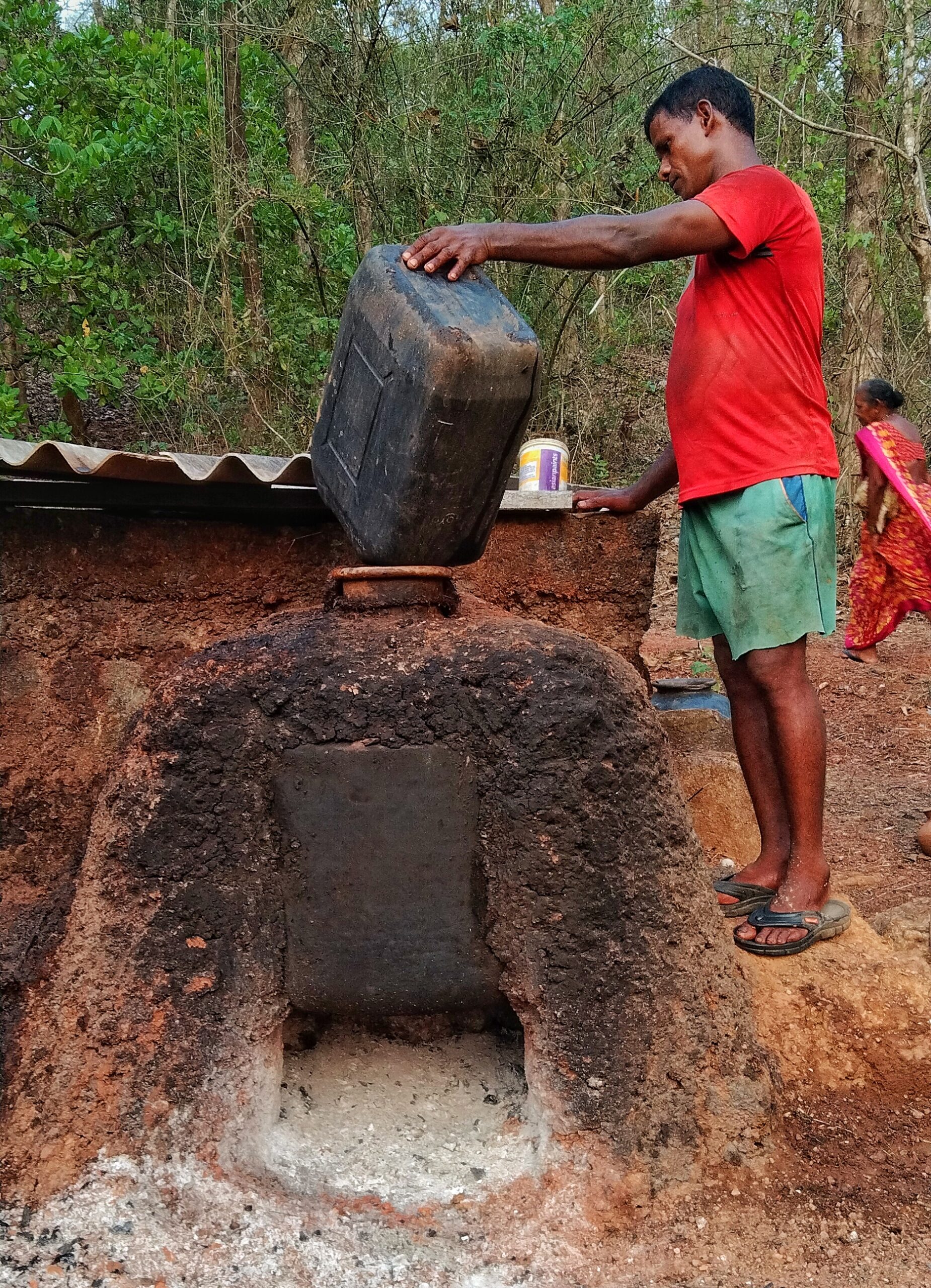
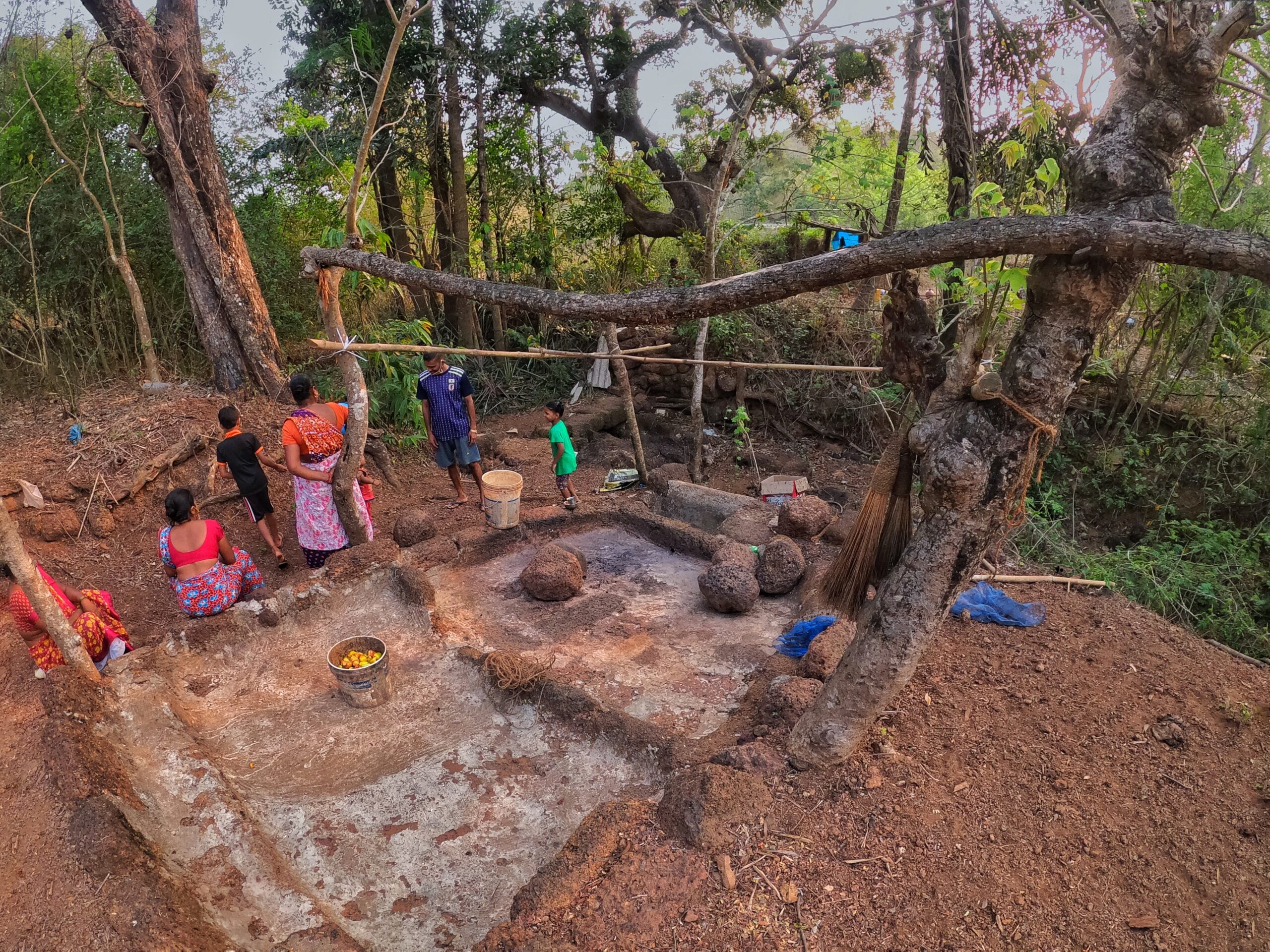
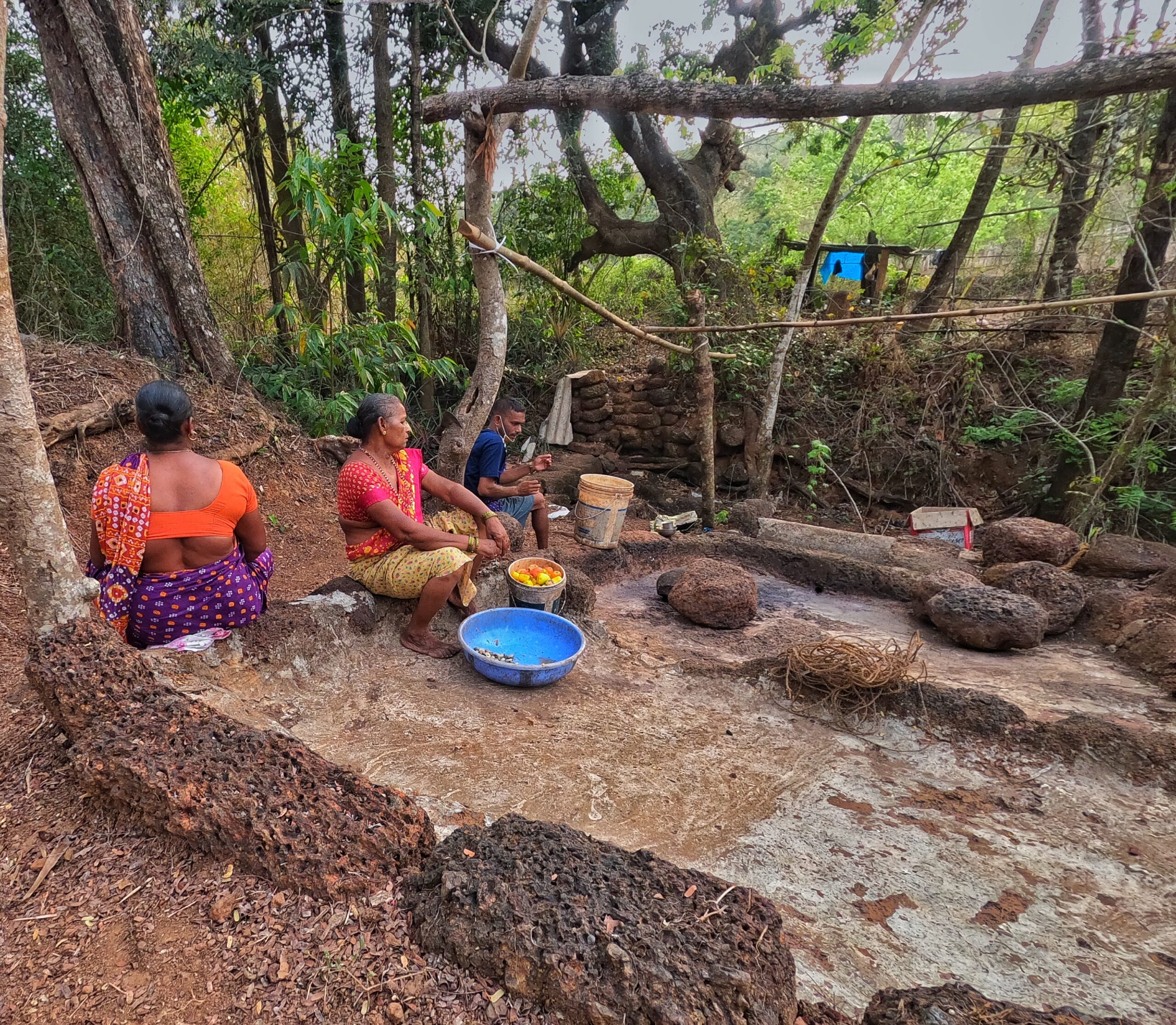
We are currently witnessing egregious changes around the globe and the pandemic has already reoriented our lives. When you visit Goa, in a post-pandemic world, remember to venture into these jungles and to walk these trails. The stories, smells, laughter, scrumptious food, and history will offer you great comfort.

Roshan Roy is a senior student of English Literature at Ashoka University currently researching Goan folk music through ethnomusicology to understand vulgarity and obscenity in the public. He usually reads non-fiction, listens to John Mayer or contemplates on life, listening and singing to Passenger’s songs.


